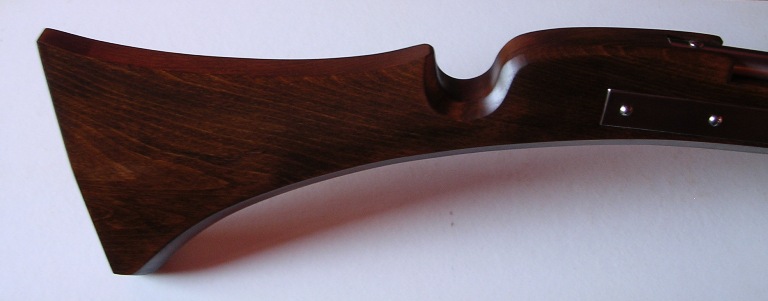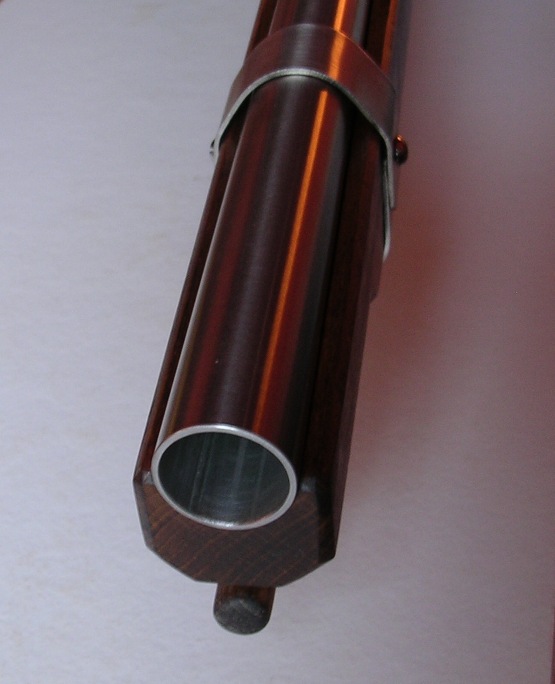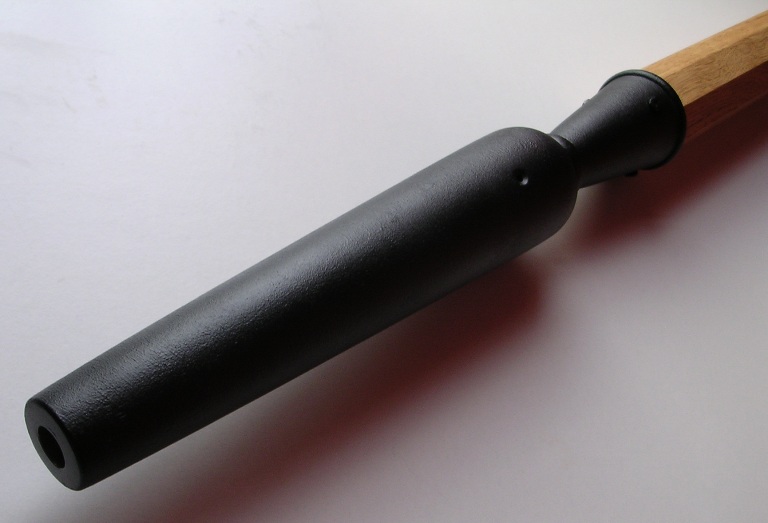Their Education Dept wanted a batch of twenty 'dummy' muskets, loosely resembling the fish-tail stocked matchlock muskets in use during the English Civil War, that they could use to run through some drill with members of the public/visitors to the museum. As is the case with these things, the budget was tight so they had to be simple, robust and maintenance-free.
The criteria was to make the stocks from hardwood, the barrels from steel and they had to be ram-roddable. No other functionality was required, or budgeted for (no lock, trigger, etc.) with a minimum of metalwork to keep the budget down. Basically, they wanted a piece of pipe nailed to a piece of wood. I hope my interpretation lifts them up above that level!
The stocks are beech, stained and oiled. The metalwork (barrel, barrel band and dummy lock plate, all the fixings) are all made from substantial, maintenance-free stainless steel. Some butts have more 'shape' to them than others, but they all have 42" barrels (tanged to the stock). The two-part barrel band is an inauthentic but simply effective solution to the problem of retaining both the barrel and ramrod over a wide variety of tolerances in stock thicknesses and depths. I don't have an 'industrial' workshop so these were made with nothing more than a bandsaw and hand-held router (with lots of jigs!!).
I hope it inspires others to try their hand at amateur gunmaking, as these are only a few extra steps (and a few weeks work, of course) away from being 'reproductions'. For what they are, they look and handle well.
Julian


[ Download ]
[ Download ]
